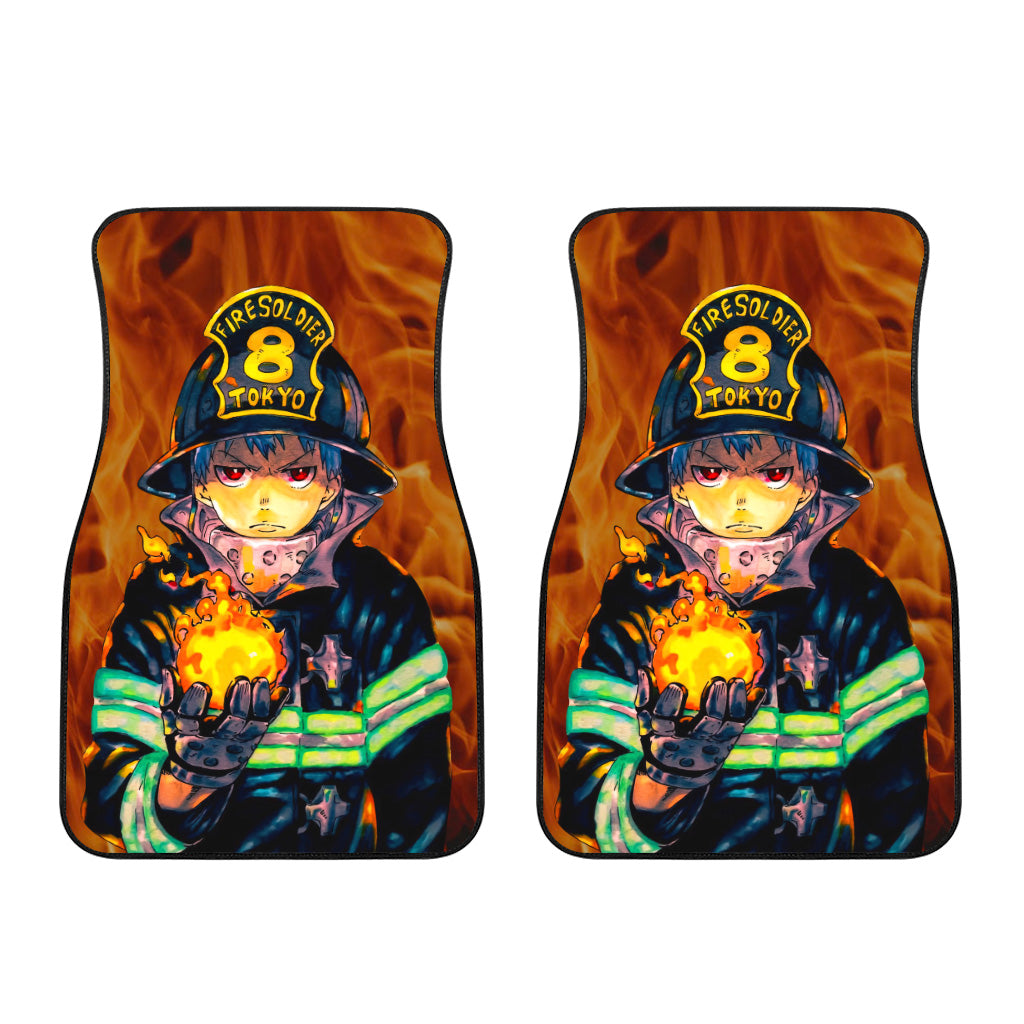Anime, Fire Force
Religion’s central role in Fire Force is undeniable

Religion plays an immensely significant role in the universe of Fire Force, far beyond what fans might initially expect. The series, also known by its Japanese title “Enen no Shouboutai: Ni no Shou,” is renowned for its thrilling action and explores various themes related to fire in unique ways. Set in a world ravaged by the Great Cataclysm 250 years prior, where infernals and pyrokinetics roam, Fire Force delves deeply into the realm of religion and its profound impact on the narrative.
Within the anime, religion stands out as a central and contentious element. It is an integral part of the Tokyo Empire, the backdrop against which the story unfolds. In the last season of Fire Force, subtle hints suggest a close connection between the followers of “The Evangelist” and the Tokyo Sol Temple, further emphasizing the significant role of religion in the series. But how exactly does religion play such a central role in Fire Force?
One religious aspect that holds immense importance in the Fire Force universe is the word “Látom.” This treasured religious term serves various essential purposes. It goes beyond a mere function and possesses multiple facets of meaning. One crucial application of “Látom” is its use in the ritual of laying infernals to rest, performed by the Special Fire Force. Each Fire Force Company includes a Sister or Priest trained in the Holy Sol Temple, and Sister Iris of Company 8 is entrusted with carrying out these rites. Religion often serves as a coping mechanism, and the use of “Látom” might serve as a tactic to alleviate the guilt associated with extinguishing infernals who were once human.

Additionally, characters in Fire Force employ “Látom” as a good luck charm. As a sacred word, the citizens of Tokyo believe that uttering it may help them avoid unfortunate circumstances. This belief is vividly depicted in the anime’s first season, where the mascots wished Shinra and Arthur good luck on their mission using the word “Látom.” Furthermore, “Látom” serves as a term that bolsters characters’ resolve. On several occasions, the fire soldiers use this word as a physical affirmation, strengthening their determination to carry out crucial missions and tasks. Lastly, it can be used as a blessing. Sisters often invoke “Látom” to bless missions and certain necessary actions undertaken by the Special Fire Force.
Central to the religious landscape of Fire Force is the Theocratic Holy Sol Temple. As the primary religion of the Tokyo Empire, it centers around the worship of Sol, the Sun God. Surprisingly, the Holy Sol Temple also holds significant authority within the Tokyo Empire’s governance. Led by the enigmatic figure known as “Raffles the III,” the theocratic government has asserted its importance on multiple occasions. In the first season of Fire Force, Raffles the III displayed absolute power by summoning the eight captains of the different Fire Force companies, surpassing the authority of the Tokyo Government and the Imperial Army. Notably, the Holy Sol Temple was one of the three founding organizations that created the Special Fire Force Brigade.

The principles propagated by the Holy Sol Temple are fervently believed by the citizens of Tokyo without question. One key teaching is that the Great Cataclysm eradicated the world’s former cultures. Raffles the First, a historical figure within the religion, discovered the “Adolla Burst,” a flame regarded as sacred by the Holy Sol Temple. He harnessed its power to create the “Amaterasu,” an immense energy source that lies at the heart of the Tokyo Empire, providing power to its citizens. The Holy Sol Temple’s claim that they are tied to the creation of the Amaterasu significantly reinforces their authority. While their hidden actions may be shrouded in suspicion and darkness, there is no denying the immense power wielded by the religious organization.
However, the Holy Sol Temple is not the sole religious force at play in the world of Fire Force. The series introduces the nefarious White Clad, a group of followers loyal to the enigmatic antagonist known as the Evangelist. The Evangelist serves as the ultimate adversary in the series, with her negative influence permeating the dark developments that unfold. Although her character has not been extensively revealed in the anime, her significance is undeniable.

What makes the connection between religion and the Evangelist particularly intriguing is the revelation that the identity of “Raffles the First,” a revered figure in the Holy Sol Temple’s history, is potentially linked to the otherworldly Evangelist. In the final season of Fire Force, hints are dropped, suggesting a controversial association between the two. If this theory holds true, it implies that the religious fabric of the Tokyo Empire might be a grand deception orchestrated by the Evangelist from another dimension.
The Evangelist’s ultimate goal is to create a new sun, with the Earth serving as its core ingredient. To achieve this, she seeks to gather the eight pillars who possess the Adolla Burst, a flame of immense power. By harnessing this power and triggering another Great Cataclysm, she aims to reshape the world. This intertwining of the Evangelist’s grand scheme with the religious elements of Fire Force adds another layer of complexity and raises profound questions about the true nature of faith and its influence on society.
While religion may be portrayed as a potential catalyst for the Tokyo Empire’s downfall, there remains a glimmer of hope embodied by “Company 8” and its protagonist, Shinra. Throughout the series, Shinra’s unwavering resolve and his unique abilities as a third-generation pyrokinetic serve as a beacon of hope in the face of religious manipulation and dark conspiracies. As Fire Force’s manga has already concluded, fans eagerly await the animated version’s full portrayal of the story’s resolution.
In conclusion, Fire Force presents religion as a central and controversial theme within its universe. From the treasured word “Látom” and its multifaceted meanings to the dominance of the Holy Sol Temple as a theocratic power, the influence of religion is pervasive. The intricate connection between the Evangelist and the Tokyo Empire’s religious fabric adds intrigue and raises questions about the true nature of faith, while the actions of the White Clad and their nefarious agenda further intensify the narrative. As Fire Force continues to captivate audiences with its gripping storytelling, the exploration of religion’s role in shaping society and its potential for both salvation and destruction remains a compelling aspect of the series.
We bring out some of the most well-known Fire Force Collection, all of which are available at reasonable costs. Visit our link now if you are interested in the Fire Force Collection!


Takehisa Hinawa,Akitaru Ōbi,Sōichirō Hague,Giovanni,Takeru noto
